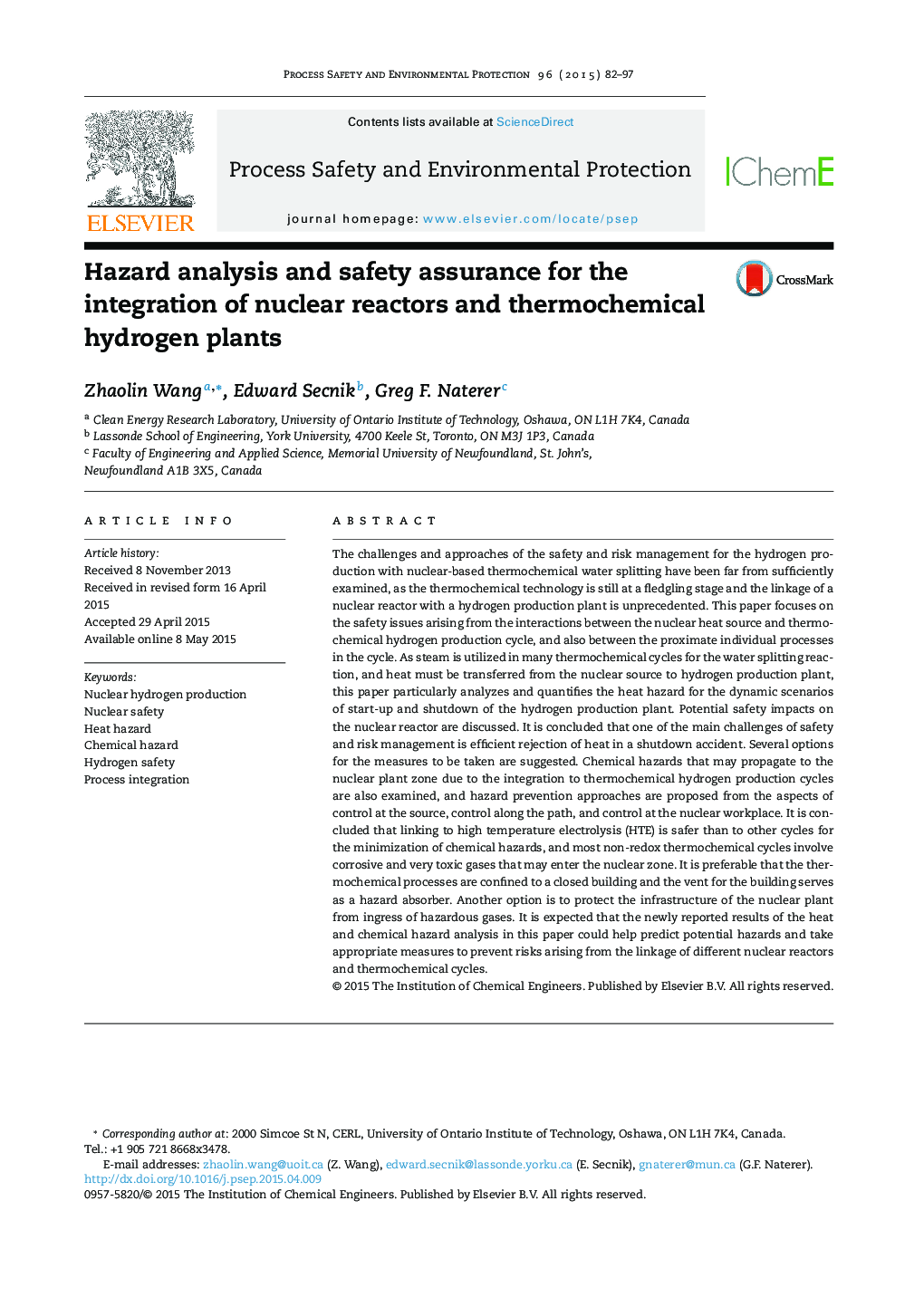| Article ID | Journal | Published Year | Pages | File Type |
|---|---|---|---|---|
| 588349 | Process Safety and Environmental Protection | 2015 | 16 Pages |
•Heat and chemical hazards are examined for nuclear and H2 system linkage.•Material and energy interactions between nuclear reactor and H2 plant are analyzed.•Safety performance of typical heating fluids is assessed from multiple risk perspectives.•Heat release measures in start-up and shutdown operations are proposed and compared.•Chemical hazards are examined and prevention approaches are proposed.
The challenges and approaches of the safety and risk management for the hydrogen production with nuclear-based thermochemical water splitting have been far from sufficiently examined, as the thermochemical technology is still at a fledgling stage and the linkage of a nuclear reactor with a hydrogen production plant is unprecedented. This paper focuses on the safety issues arising from the interactions between the nuclear heat source and thermochemical hydrogen production cycle, and also between the proximate individual processes in the cycle. As steam is utilized in many thermochemical cycles for the water splitting reaction, and heat must be transferred from the nuclear source to hydrogen production plant, this paper particularly analyzes and quantifies the heat hazard for the dynamic scenarios of start-up and shutdown of the hydrogen production plant. Potential safety impacts on the nuclear reactor are discussed. It is concluded that one of the main challenges of safety and risk management is efficient rejection of heat in a shutdown accident. Several options for the measures to be taken are suggested. Chemical hazards that may propagate to the nuclear plant zone due to the integration to thermochemical hydrogen production cycles are also examined, and hazard prevention approaches are proposed from the aspects of control at the source, control along the path, and control at the nuclear workplace. It is concluded that linking to high temperature electrolysis (HTE) is safer than to other cycles for the minimization of chemical hazards, and most non-redox thermochemical cycles involve corrosive and very toxic gases that may enter the nuclear zone. It is preferable that the thermochemical processes are confined to a closed building and the vent for the building serves as a hazard absorber. Another option is to protect the infrastructure of the nuclear plant from ingress of hazardous gases. It is expected that the newly reported results of the heat and chemical hazard analysis in this paper could help predict potential hazards and take appropriate measures to prevent risks arising from the linkage of different nuclear reactors and thermochemical cycles.
